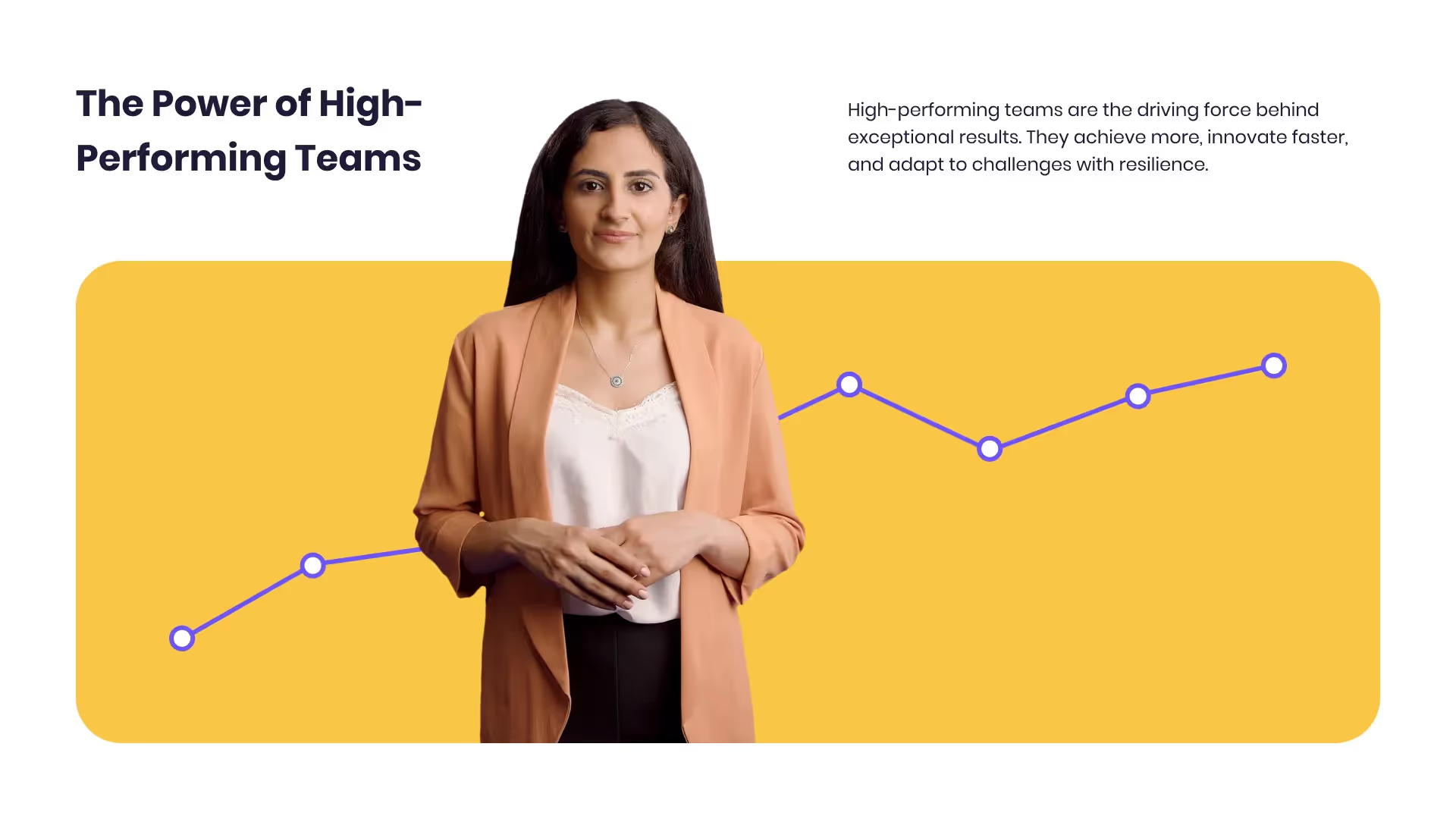.avif)
Want a personalised avatar?
Instant Avatars can be recorded using your phone or camera, and created in under a minute. These avatars are quick and easy to create, and they keep your original background and movements.

Video Transcription AI: Transforming Business Communication

Unlocking the Potential of Video Transcription AI
The rapid advancement of artificial intelligence (AI) has opened new avenues for businesses to enhance their operations, and one of the most transformative technologies in this space is video transcription AI. As businesses continue to integrate multimedia into their communication strategies, understanding the benefits and applications of video transcription AI becomes essential. At Colossyan, we are at the forefront of empowering businesses to leverage AI technology for seamless video production and transcription.
Video transcription AI refers to the use of machine learning algorithms to convert spoken language in video content into written text. This technology not only optimizes the accessibility of video content but also enhances its searchability and usability. By automatically generating transcripts, businesses can ensure that their content reaches a broader audience, including those who prefer reading or need text for accessibility purposes. In this post, we'll explore the intricacies of video transcription AI, its practical implementations, and how Colossyan can streamline this process for your business.
Understanding Video Transcription AI
Video transcription AI automates the process of converting audio speech from video files into text. Utilizing sophisticated algorithms, this technology can accurately transcribe spoken words into written format, allowing for easy editing, indexing, and searching. Here's how video transcription AI typically works:
- Audio Extraction: The first step involves extracting audio data from a video file.
- Speech Recognition: AI technologies analyze the audio and recognize speech patterns, converting them into text.
- Text Formatting: The resulting text is formatted and organized, often with timestamps to align with the video content.
Video transcription AI is a game-changer for industries like tech, healthcare, and education, where accurate and rapid transcription is crucial. It enables businesses to make content more accessible, improving user engagement and compliance with accessibility standards.
Step-by-Step Guide to Implementing Video Transcription AI
Integrating video transcription AI into your business processes can significantly enhance your content strategy. Here's a step-by-step guide to help you get started:
- Identify Needs: Determine the specific needs of your business. Are you looking to improve accessibility, enhance searchability, or maintain compliance?
- Select a Platform: Choose a reliable AI platform like Colossyan that offers robust video transcription capabilities.
- Upload Content: Upload your video files to the platform. Ensure that your content is clear and high-quality for optimal transcription accuracy.
- Review Transcripts: Once the transcription is complete, review the text for any necessary edits or adjustments.
- Integrate Transcripts: Integrate the final transcripts into your content management system for seamless access and distribution.
By following these steps, businesses can efficiently implement video transcription AI into their workflows, saving time and resources while enhancing content accessibility.
Real-World Examples and Case Studies
Consider a mid-sized tech company that regularly hosts webinars for their products. By employing video transcription AI, they can transcribe these webinars into text, making them searchable and accessible. This not only aids in content repurposing but also enhances SEO efforts by providing search engines with more content to index.
In the healthcare industry, transcription AI is used to convert patient consultations into text, ensuring accurate record-keeping and compliance with healthcare regulations. This is a crucial step in maintaining patient confidentiality and improving service delivery without manual transcription.
Best Practices for Video Transcription AI
To maximize the benefits of video transcription AI, it's important to follow these best practices:
- Quality Audio: Ensure that your video files have clear and high-quality audio, as this directly impacts the accuracy of transcription.
- Regular Updates: Keep your transcription software updated to leverage the latest advancements in AI technology.
- Continuous Review: Regularly review transcripts for accuracy and make necessary edits to maintain high standards.
- Security Protocols: Implement robust security measures to protect sensitive information during the transcription process.
By adhering to these practices, businesses can ensure that they are leveraging video transcription AI to its fullest potential.
Common Challenges and Solutions
Despite its advantages, video transcription AI may present some challenges, such as:
- Accents and Dialects: AI might struggle with different accents or dialects, leading to inaccuracies. Regular training and updates can mitigate this issue.
- Background Noise: High levels of background noise can interfere with transcription accuracy. Investing in quality audio equipment can help reduce this problem.
- Technical Limitations: Some complex terminology might not be recognized by AI. Customizing the AI model with industry-specific vocabulary can improve accuracy.
Addressing these challenges proactively ensures that video transcription AI delivers optimal results.
Industry Insights and Current Trends
The demand for video transcription AI is on the rise, with businesses increasingly recognizing its value in enhancing content accessibility and engagement. Current trends indicate a growing emphasis on accuracy and speed, with AI models evolving to handle complex language patterns and nuances. Additionally, there is a notable shift towards integrating AI transcription with other AI-driven tools, such as sentiment analysis and content recommendation engines.
As AI technology continues to evolve, businesses can expect even more innovative applications of video transcription AI, further streamlining operations and enhancing user experience.
Conclusion
Video transcription AI stands as a pivotal tool in the digital transformation of businesses across various industries. By automating the conversion of spoken content into text, this technology not only enhances accessibility but also amplifies the reach and effectiveness of video content. At Colossyan, we are committed to helping businesses seamlessly integrate video transcription AI into their workflows, enabling them to unlock new levels of efficiency and engagement.
As you consider implementing video transcription AI, remember that the key lies in choosing the right platform that aligns with your business needs and objectives. With Colossyan, you can be confident in your ability to transform video content into a powerful tool for communication, training, and engagement.

Networking and Relationship Building
Use this template to produce videos on best practices for relationship building at work.

Developing high-performing teams
Customize this template with your leadership development training content.

Office conversation
Recreate realistic office scenarios using thisconversation-focused template.
Frequently asked questions
What is video transcription AI?

Video transcription AI is the process of using artificial intelligence to convert spoken language in video content into written text. This technology enhances content accessibility and searchability, making it easier for businesses to reach a broader audience.
How does video transcription AI benefit businesses?

Video transcription AI benefits businesses by improving content accessibility, enhancing SEO, and automating the transcription process, saving time and resources. It also ensures compliance with accessibility standards.
What are the common challenges of using video transcription AI?

Common challenges include dealing with accents and dialects, managing background noise, and recognizing complex terminology. These can be mitigated through regular updates and customization of AI models.
How accurate is video transcription AI?

The accuracy of video transcription AI depends on several factors, including audio quality and the complexity of spoken language. High-quality audio and regular updates can improve accuracy.
How can Colossyan help with video transcription AI?

Colossyan provides a platform that streamlines the video transcription process, offering robust AI capabilities that ensure high accuracy and efficiency. Our platform is designed to meet the needs of diverse industries, enabling seamless integration into existing workflows.
Didn’t find the answer you were looking for?
















%20(1).avif)
.webp)

